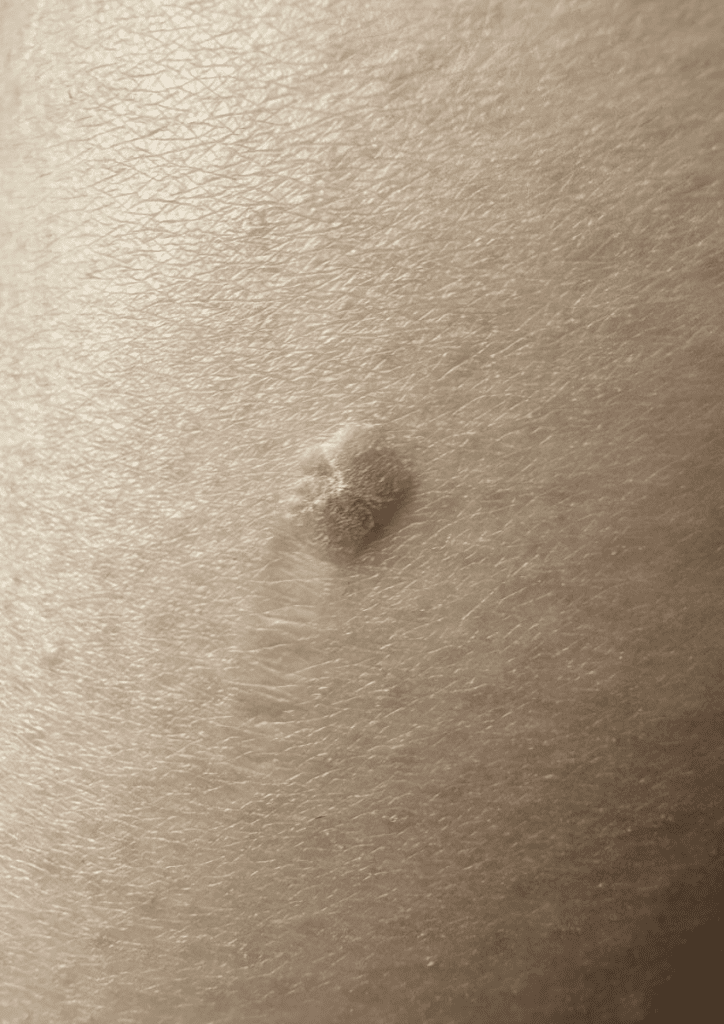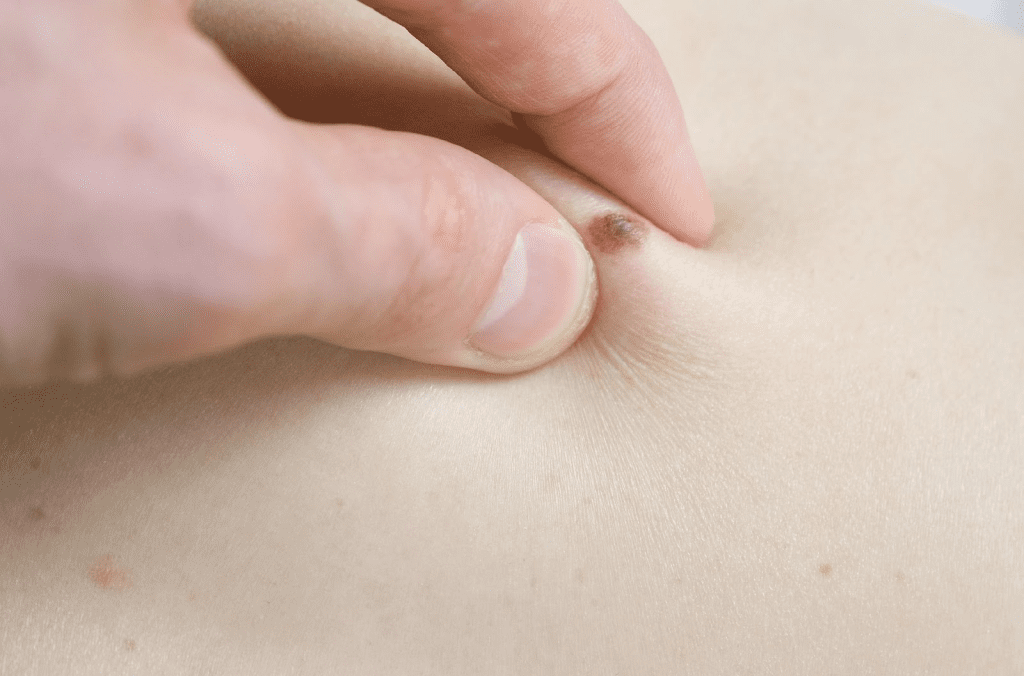Moles are common, and most of us have them scattered across our skin. But what if you notice a mole that has changed, developed a crusty appearance, or seems unusual? It’s natural to be concerned, especially with the growing awareness about skin cancer. In this article, we’ll dive deep into what it means when you notice a change in your mole, particularly when it looks crusty, and whether you should seek medical advice.
What Are Moles and How Do They Form?

Moles, medically known as nevi, are small skin growths made up of pigment-producing cells called melanocytes. These cells give moles their characteristic brown or black color, although moles can come in various shades. Most people have between 10 and 40 moles by adulthood, and they can appear anywhere on the body.
Moles are typically benign and don’t change much over time. However, some may evolve or transform due to various factors, including sun exposure, hormonal changes, or, more rarely, the onset of skin cancer. Changes like crusting, bleeding, or irregular borders can raise red flags, so it’s important to stay informed.
The ABCDEs of Moles: What to Watch Out For
Dermatologists recommend the “ABCDE” rule to help individuals monitor moles for signs of potential skin cancer, particularly melanoma. Here’s a breakdown of what you should look for when examining your moles:
A – Asymmetry:
A healthy mole is typically symmetrical, meaning if you draw a line through the middle, both halves should match. If one half looks different from the other, it could be a warning sign.
B – Border:
Check the edges of your mole. A normal mole has smooth, even borders, while a mole that has irregular, blurred, or ragged edges might be something to be concerned about.
C – Color:
Moles should generally be one consistent color. If your mole has multiple colors or unusual shades like blue, white, or red mixed with brown or black, it’s worth paying attention to.
D – Diameter:
Moles larger than 6mm (about the size of a pencil eraser) are more likely to be problematic, especially if they continue to grow.
E – Evolution:
The most important factor is change. If a mole changes in size, shape, color, or texture—or if it starts crusting, bleeding, or itching—this could be an early indicator of melanoma or another skin condition that needs medical attention.
Why Is My Mole Crusty?

A crusty mole can be alarming. But before you panic, it’s important to understand that not all crusty moles are malignant. There are a few reasons why a mole might develop a crusty texture:
- Irritation:
Moles can become irritated from clothing friction, scratching, or other physical trauma. This can cause the mole to scab over or develop a crusty surface. - Dry Skin:
If the skin surrounding a mole becomes dry or flaky, the mole itself may appear crusty. In such cases, moisturizing the area might improve the condition. - Benign Skin Growths:
Some non-cancerous skin growths, like seborrheic keratoses, can look similar to moles and may have a rough, crusty texture. These growths are usually harmless but can sometimes be confused with melanoma. - Skin Cancer (Melanoma):
Crusting can also be a sign of something more serious. If your mole becomes crusty and you notice other changes, such as an increase in size, bleeding, or itching, it’s essential to get it checked by a healthcare professional as soon as possible. Melanoma is a form of skin cancer that can spread if not caught early, and crusting can be one of its warning signs.
When Should You Seek Medical Advice?
If you notice any of the ABCDE changes or the crusty texture persists, it’s time to consult a healthcare provider, preferably a dermatologist. A doctor can perform a thorough examination and, if necessary, take a biopsy of the mole to determine whether it’s benign or malignant.
Here are a few scenarios where you should not delay seeking medical attention:
- The mole has recently changed in size, shape, or color.
- The mole becomes itchy, painful, or starts to bleed.
- You have a family history of skin cancer or have experienced prolonged sun exposure or severe sunburns.
- The mole feels different to the touch, such as becoming hard, lumpy, or crusty.
How Is a Suspicious Mole Diagnosed?

If your doctor finds the mole concerning, they may suggest a biopsy. A biopsy involves removing a small sample of the mole and sending it to a laboratory for analysis. This procedure can confirm whether the mole is benign or cancerous.
There are several types of biopsies, including:
- Shave biopsy: The top layers of the mole are shaved off for analysis.
- Punch biopsy: A small, circular portion of the mole is removed.
- Excisional biopsy: The entire mole is removed along with a small margin of healthy skin.
Once the biopsy results come in, your doctor will discuss the next steps, which may include further treatment or monitoring.
Prevention: How to Keep an Eye on Your Skin Health
Even if your crusty mole turns out to be benign, it’s crucial to keep monitoring your skin regularly. Skin cancer is one of the most preventable forms of cancer, and early detection can make a significant difference in treatment outcomes.
Here are a few preventive measures:
- Wear sunscreen daily: Use a broad-spectrum sunscreen with at least SPF 30 to protect your skin from harmful UV rays.
- Avoid tanning beds: The artificial UV light can increase your risk of skin cancer.
- Wear protective clothing: When spending time in the sun, wear hats, sunglasses, and long sleeves.
- Perform regular self-exams: Check your skin monthly for new moles or changes to existing ones. Pay attention to hard-to-see areas like your back, scalp, and the soles of your feet.
- Annual dermatologist visits: Regular check-ups with a dermatologist can help catch skin issues early, especially if you have a personal or family history of skin cancer.
Conclusion: Don’t Ignore Changes in Your Moles
A crusty mole on your thigh or anywhere else on your body might seem like a minor issue, but it could be a sign of something more serious. While many moles are harmless, any changes in appearance, texture, or sensation should be taken seriously. Using the ABCDE rule as a guide and staying vigilant with regular skin checks can help you catch potential issues early.
If you’re unsure about your mole or notice changes, don’t hesitate to consult a dermatologist. Early detection is key to effectively treating skin conditions, including skin cancer, and maintaining your overall health and well-being.


